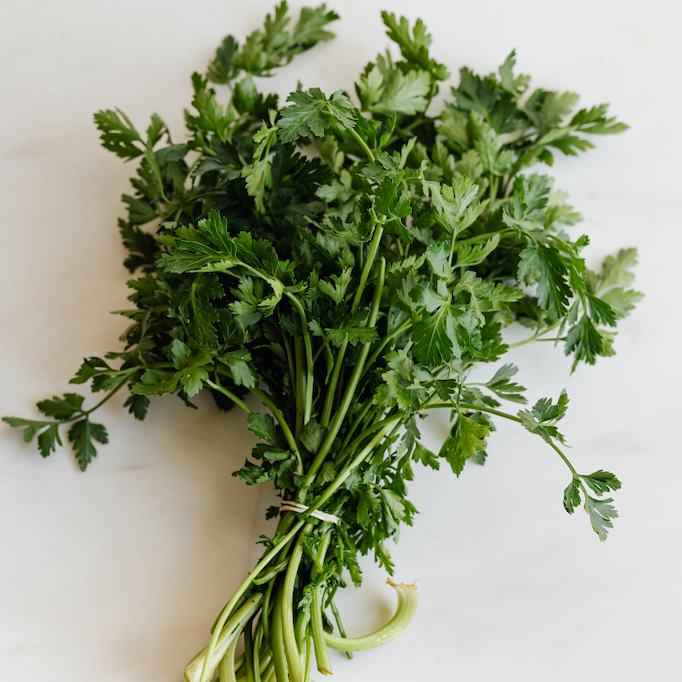
Do you need help organizing the spice rack in your kitchen?
Are you looking for some practical and clever ways to keep herbs and spices organized?
Organizing a spice rack is a wonderfully compact project.
It’s perfect for when you want to put your kitchen in order and see results in a matter of minutes.
In this post, you’ll find fourteen clever ways you can organize a spice rack.
Whether you have a rotating spice rack, wall mounted shelf, or a counter top on which you keep spices, you can easily put things in order with these suggestions.
Feel free to mix and match any of the below methods for the most effective use of your space.
Organize alphabetically.
This is by far the easiest way to organize spices.
You can simply arrange all of your spices in alphabetic order, from A to Z.
If you’re feeling particularly adventurous, you could reverse the alphabet and have it start with the letter Z and end with the letter A.
Want even more customization? Try breaking up the alphabet into smaller sections for easy usage, such as: A to F, G to L, M to R, and S to Z.
Organize by area of origin.
Basil from Italy, garlic from China, rosemary from the United States, cumin from India…the spice trade is truly a global one!
For those serious about the source of their spices, organizing by origin is a no-brainer.
This is particular useful if you are preparing dishes with similar flavors.
You could organize spices by country, region, district, town, city, county, continent, hemisphere…you name it!
Organize by store.
Where did you purchase your spices? Chances are, they probably came from at least a couple of different places.
Knowing which store you purchased spices from makes it easier to add items to your shopping list when you’re running low.
Try organizing your spices based on their purchase location.
This could be one of many places including, but not limited to: supermarket, farmer’s market, gourmet shop, local convenience store, big box store, specialty store, and catalog or online store.
Organize by brand.
Similar to the store organization method, this method of organization allows you to zero in on specific brands of spices.
Maybe you have a handful of favorite brands you like to use for particular dishes?
Perhaps you like having similar brands sit together on the shelf.
And maybe it’s just easier for you to locate the spice you need on your spinning spice rack when you know the red pepper has a sleek, bright blue brand label.
It’s completely up to you!
Organize by cuisine.
Why not let the flavors of the world be your guide in your organization project?
You can organize your spices according to the cuisines with which they are commonly associated.
Here’s several cuisines to get you started: Chinese, Ethiopian, French, Greek, Indian, Italian, Japanese, Mexican, Moroccan, Nigerian, Thai, Turkish, Spanish…and so on.
Organize by treatment process.
Not all herbs and spices are prepared and processed in the same manner.
How about organizing spices by their treatment method?
Some ideas include: natural, organic, non-irradiated, conventional, hand-picked, machine processed, hand-packed, machine packed, sun dried, air dried, roasted, and aged.
Organize by taste.
Allow your tastebuds to be your guide.
Try organizing your spices into different categories of salty, savory, sweet, spicy, and bitter.
Are you ready to take things a step further?
You could organize spices by their varying degrees of saltiness, sweetness, and spiciness, for example, from mild to extreme.
Organize by color.
Prepare a pretty culinary palette for yourself in your kitchen.
You can roundup and organize spices according to their colors in any manner or method you so wish.
You can get started with these common spice colors: green, white, yellow, orange, red, black, purple, and brown.
Organize by preparation method.
Spices come in all sorts of different preparation treatments.
You can easily separate one type of spice from another using this method.
After all, garlic powder is different than minced garlic and whole cardamom pods are different than ground cardamom.
Some preparation methods include ground, minced, dried, granules, powder, cracked, and flakes.
Organize by recipe.
If you want to make your cooking be even more efficient, try organizing spices by their meal, recipe, or method of use.
You don’t have to organize your entire collection in this manner.
But if there is a recipe that uses only a handful of exclusive spices in a recipe, it may make sense to group them together in your spice rack for easy access.
Organize by container size.
You can organize spices based on the size of the containers in which they are stored.
This can be anything from commercial sized, extra large, medium, small, tiny, and extra tiny!
Of course, your storage method mileage may vary depending on the size of containers and the amount of space you have in a spice rack.
Organize by type.
What type of container was that spiced stored in?
Choose from different container types including glass, plastic, metal, and wood.
You could also take things another step further and organize those containers by their color or their opacity (clear or opaque).
Organize by lid type.
Sprinkle, shake, or spoon those spices onto your food. Which ones are which?
Try organizing your spice containers by their lid type.
Here’s a few ideas to get you started: shaker, flip-top, screw-on lid, cork, stopper, and pop-off lid.
Organize by price.
Some spices are quite common and modestly priced, while other spices are incredibly rare and expensive.
Perhaps you have some exquisite spices that are only to be used for a special dish.
You’d most likely want to keep these separate from your everyday spice collection.
Use your own discretion here when it comes to sorting expensive versus relatively inexpensive spices.
How about you? Which of the above methods do you currently use/think you’ll use in your kitchen? Join the conversation and leave a comment below!





0 Comments